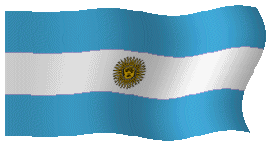
B"H
Jewish  Tours
Tours
 Buenos Aires, Argentina
Buenos Aires, Argentina
ARGENTINA, South American Federal Republic, general population (2004) 39,150,000; Jewish population 190,000.
The period 1939–1968 was one of a limited religious renaissance, supported by a new wave of religious immigrants. New types of talmudei torah and yeshivot, both Ashkenazi and Sephardi, were founded. The most notable among them was the Yeshivah Gevohah that was maintained by AMIA, five graduates of which were ordained in Israel up to 1968. During this period various religious organizations, both political and apolitical, such as Mizrachi, Yavneh, Agudat Israel, and the Sephardi movement Shuvah Israel, were created. The rabbinate of the kehillah was institutionalized and developed during this period. In 1966, Rabbi David Kahana, former chief chaplain of the Israel Air Force, assumed the post of av bet din of the rabbinate of AMIA until the mid-1970s. In the Sephardi sector, the religious renaissance was manifested in the appointment of new spiritual leaders in each of the four communities and in the reinstatement of rabbinical authority, especially among the communities of Syrian origin. Conservative Judaism, represented only by the Congregación Israelita de la República Argentina (CIRA), led by Rabbi Guillermo Schlesinger, expanded during this period, when a few German-speaking Conservative congregations were established. In 1960 Rabbi Marshall Meyer was sent to CIRA from the Jewish Theological Seminary in New York. He founded Ramah as the youth section of CIRA with its own synagogue. In 1962, following his attempts to become the rabbi of CIRA, a schism ensued, and an important faction of CIRA established the Conservative Bet-El congregation under the leadership of Rabbi Meyer. Earlier that year, the Seminario Rabinico Latinoamericano was established, offering a preparatory course for advanced studies at the Jewish Theological Seminary of America in New York. This Conservative model of a congregation with many youth activities, a synagogue, and a talmud torah that in many cases became a day school, was adopted also by some of the Orthodox synagogues.
In 1964 Reform Judaism established its first congregation, Emanuel, in Buenos Aires. In 1968 Argentina had three Reform, seven Conservative, and fifteen Orthodox rabbis, ten of whom were Ashkenazi and five Sephardi; four other rabbis were practicing temporarily in Buenos Aires.
|
Visite nuestro sitio/Visit our home page: |